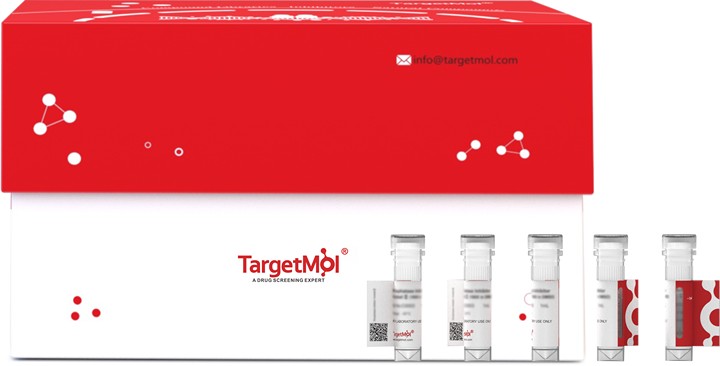 Your shopping cart is currently empty
Your shopping cart is currently empty
APEG1 Protein, Human, Recombinant (His)
Striated muscle preferentially expressed protein kinase, also known as aortic preferentially expressed protein 1, APEG-1, SPEG and KIAA1297, is a protein that belongs to the protein kinase superfamily and CAMK Ser/Thr protein kinase family. SPEG / APEG-1 contains two fibronectin type-III domains, nine Ig-like (immunoglobulin-like) domains, two protein kinase domains. Isoform 1 of SPEG is preferentially expressed in striated muscle. Non-kinase form such as isoform 3 of SPEG is predominantly expressed in the aorta. Isoform 3 of SPEG appears to be expressed only in highly differentiated ASMC in normal vessel walls and down-regulated in dedifferentiated ASMC. Isoform 3 of SPEG may have a role in regulating the growth and differentiation of arterial smooth muscle cells. Isoform 3 of SPEG is quickly down-regulated in response to vascular injury, when ASMC cells change from a quiescent to a proliferative phenotype.

APEG1 Protein, Human, Recombinant (His)
| Pack Size | Price | USA Warehouse | Global Warehouse | Quantity |
|---|---|---|---|---|
| 5 μg | $76 | 7-10 days | 7-10 days | |
| 10 μg | $118 | 7-10 days | 7-10 days | |
| 20 μg | $197 | 7-10 days | 7-10 days | |
| 50 μg | $458 | 7-10 days | 7-10 days |
Product Information
| Biological Activity | Kinase activity untested |
| Description | Striated muscle preferentially expressed protein kinase, also known as aortic preferentially expressed protein 1, APEG-1, SPEG and KIAA1297, is a protein that belongs to the protein kinase superfamily and CAMK Ser/Thr protein kinase family. SPEG / APEG-1 contains two fibronectin type-III domains, nine Ig-like (immunoglobulin-like) domains, two protein kinase domains. Isoform 1 of SPEG is preferentially expressed in striated muscle. Non-kinase form such as isoform 3 of SPEG is predominantly expressed in the aorta. Isoform 3 of SPEG appears to be expressed only in highly differentiated ASMC in normal vessel walls and down-regulated in dedifferentiated ASMC. Isoform 3 of SPEG may have a role in regulating the growth and differentiation of arterial smooth muscle cells. Isoform 3 of SPEG is quickly down-regulated in response to vascular injury, when ASMC cells change from a quiescent to a proliferative phenotype. |
| Species | Human |
| Expression System | E. coli |
| Tag | C-His |
| Accession Number | Q15772-4 |
| Synonyms | SPEGβ,SPEGα,SPEGbeta,SPEGalpha,SPEG complex locus,CNM5,BPEG,APEG-1,APEG1 |
| Construction | A DNA sequence encoding the human SPEG isoform 3 (Q15772-4) (Met 1-Glu 113) was fused with a polyhistidine tag at the C-terminus. Predicted N terminal: Met |
| Protein Purity | > 85 % as determined by SDS-PAGE |
| Molecular Weight | 14 kDa (predicted); 19 kDa (reducing conditions) |
| Endotoxin | Please contact us for more information. |
| Formulation | Supplied as sterile PBS, pH 7.4. |
| Reconstitution | A Certificate of Analysis (CoA) containing reconstitution instructions is included with the products. Please refer to the CoA for detailed information. |
| Stability & Storage | It is recommended to store the product under sterile conditions at -20°C to -80°C. Samples are stable for up to 12 months. Please avoid multiple freeze-thaw cycles and store products in aliquots. |
| Shipping | Shipping with blue ice. |
| Research Background | Striated muscle preferentially expressed protein kinase, also known as aortic preferentially expressed protein 1, APEG-1, SPEG and KIAA1297, is a protein that belongs to the protein kinase superfamily and CAMK Ser/Thr protein kinase family. SPEG / APEG-1 contains two fibronectin type-III domains, nine Ig-like (immunoglobulin-like) domains, two protein kinase domains. Isoform 1 of SPEG is preferentially expressed in striated muscle. Non-kinase form such as isoform 3 of SPEG is predominantly expressed in the aorta. Isoform 3 of SPEG appears to be expressed only in highly differentiated ASMC in normal vessel walls and down-regulated in dedifferentiated ASMC. Isoform 3 of SPEG may have a role in regulating the growth and differentiation of arterial smooth muscle cells. Isoform 3 of SPEG is quickly down-regulated in response to vascular injury, when ASMC cells change from a quiescent to a proliferative phenotype. |
Dose Conversion
Calculator
Tech Support
| Size | Quantity | Unit Price | Amount | Operation |
|---|

Copyright © 2015-2025 TargetMol Chemicals Inc. All Rights Reserved.



